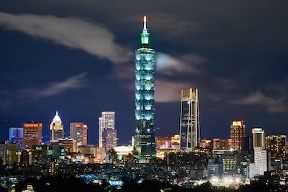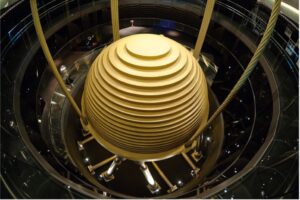Which View from the Top?
Despite the nation’s political tensions with mainland China, Taipei, Taiwan remains one of the leading business cities in all of Asia. Business moves very fast, as it does in many large cities in Asia, and during the last twenty years there has been non-stop construction activity.  Indeed, one of the early Taipei skyscrapers, Taipei 101, owned the title as the tallest building in the world when it first opened. Several years ago I had the privilege of being in Taipei for business, and I took an evening to go to the top of Taipei 101. I was duly impressed as I looked out to the rest of the city – we were up a long way! The thing that impressed me the most, however, was not what I saw when I looked out – it was what I saw when I ventured to the interior of the building.
Indeed, one of the early Taipei skyscrapers, Taipei 101, owned the title as the tallest building in the world when it first opened. Several years ago I had the privilege of being in Taipei for business, and I took an evening to go to the top of Taipei 101. I was duly impressed as I looked out to the rest of the city – we were up a long way! The thing that impressed me the most, however, was not what I saw when I looked out – it was what I saw when I ventured to the interior of the building.
The island nation of Taiwan, situated in the northeast portion of the Pacific ocean, is at risk from powerful storms as well as periodic earthquakes. To address the structural risk from these weather and environmental issues, the architects and engineers of Taipei 101 installed the largest Wind Damper of any building in the world.
Spanning six stories at the very top of the Taipei 101 skyscraper, this wind damper is a series of large metal plates welded together to form an enormous globe that looks like a very large pendulum. It weighs more than 600 tons and is suspended by huge metal cables attached to the very center of the top of the building.
By being suspended in the center of the top of the building, this wind damper lessens the impact of the high winds that buffet the sides of Taipei 101. When the winds hit and the building starts to sway, the weight of the wind damper shifts ever so slightly to absorb energy and minimize swaying, thus controlling the dangerous wind forces that might otherwise cause the building to topple. In the same way, should an earthquake cause the land to shift underneath the building, this wind damper adjusts to top of the building to offset any negative energy.
Sometimes our job as a leader is to be change agents – to destroy the status quo and force growth.

Many times, however, our job as leaders is similar to the Taipei 101 Wind Damper. The weight of our convictions at the top of our organizations needs to be used to lessen the impact of negative energy on our team members. As we lead well, the substance of our consistency should absorb the impact of a swaying world and protect our people and organizations from the tendency to self-destruct. How weighty are you? How stable are you? How does that benefit your team?
Photo credit: Armand du Plessis, CC BY 3.0 <https://creativecommons.org/licenses/by/3.0>, via Wikimedia Commons
